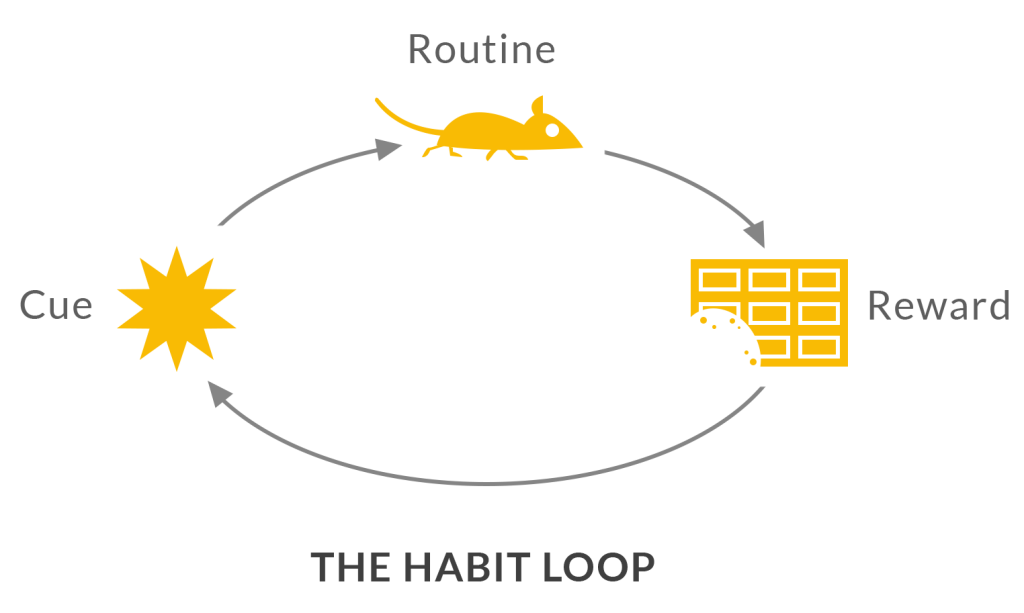The Power of Habit:
Why We Do What We Do in Life and Business by Charles Duhigg
The Power of Habit is a book about habit formation and how to change habits. The book is listed in the best seller list of NYT and Amazon. That listing encouraged me to buy and check the book. Later, i found out that The Power of habit is NOT a management book, but more of a self-help book, which I personally don’t prefer. Anyways, I found one very interesting example, rather history of toothpaste / brushing habit that made Pepsodent market-leader in 50’s. Why we need toothpaste and what humans used to do to for dental hygiene since the dawn of civilization. Also, was Pepsodent first mover or it just got lucky due to marketing gimmick? Read the book to know more about how the habit of brushing was inculcated and spread to the whole world. That shows the power of marketing.
Habit loop
Charles Duhigg, the author, basically uses one simple concept of habit formation loop throughout the book. The loop contains, cue, routine, and reward. The examples include the done-to-death rats experiments in the lab. However, the one interesting and fairly long example is about one person, who lost the part of his brain that stores the memories. So, this person (read book to know the name!) sitting in his house could not answer where is the bathroom or kitchen. But whenever he felt the need, he could go to kitchen to get food or use bathroom. That showed the importance of habits (repetitive behavior), which is different from the memory part.
So, logically, if one wants to change the habits, the cue or the routine has to be changed. As humans, we do many things in automatic mode, because the brain always tries to reduce the cognitive load. Some people are used to eat unhealthy snacks with tea/coffee in office breaks. To break this habit, a minor change like when the the cue (timing of break) occurs, one can wait for 1 minute, listen to fav song, or just drink one glass of water. This minor change can break the urge for the unhealthy snack. Again, this is the core concept of Thinking, Fast and Slow, –
System 1 and 2 (automatic mode and logical mode), which also appears in Misbehaving.
Keystone habits
The concept of keystone habit is – one need to change just one keystone habit, which has the trickle effects on the rest of the habits. The example in the book is about Alcoa – a USA aluminium conglomerate. The new CEO Paul just focused on zero accident/ incident, instead of talking about improving efficiency, reducing costs etc. – the typical jargon of a any newly appointed CEO. When he started the idea, the stock tanked. Gradually, it proved to be a keystone habits. It is next to impossible to change the habits of workers/managers at the shop floor who are accustomed to their way of doing things. Talking six sigma or asking to change process doesn’t work. So, when the idea of zero incident floated, the first thing workers notices that it ultimately helps them (their lives). So, to reach that goal, the workers started to improve the processes and steps that lead to zero incident.
Official website for the book The Power of Habit
My final recommendation is to avoid this book if you are ONLY looking for management/business insights. Otherwise, one time read is fine. In case you are more interested in change management philosophy, you may look at Switch by Chip Heath and Dan Heath.
Change might not be fast and it isn’t always easy. But with time and effort, almost any habit can be reshaped.
The Power of Habit: Why We Do What We Do in Life and Business
